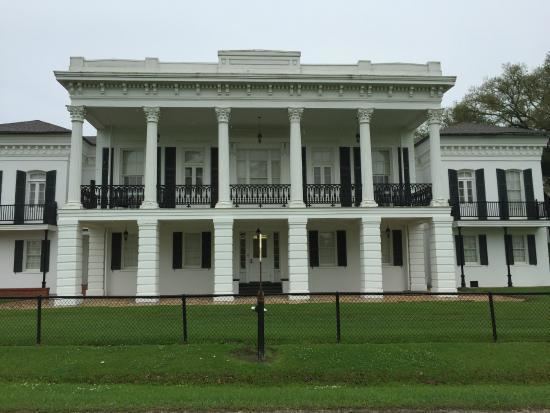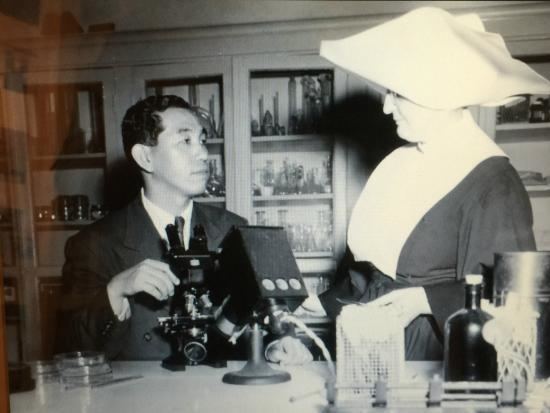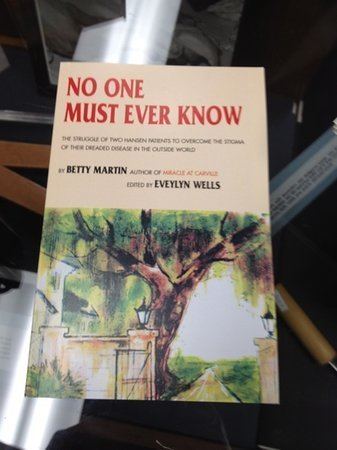Established 1996 | Founded 1996 | |
Location 5445 Point Clair Rd
Carville, Louisiana 70721 Curator Elizabeth Schexnyder, telephone 225-642-1950 Website National Hansen's Disease Museum at www.hrsa.gov Similar Earl K Long Medical, Plaquemine Lock State Historic S, Frog Cotton Plantatio, River Road African American, Centenary College of Louisiana | ||
The National Hansen's Disease Museum is a historical museum in Carville, Louisiana at the site of a former sugar plantation and was once home of the National Leprosarium.
Contents

History

Located on the eastern bank of the Mississippi River in Carville, Louisiana, the National Leprosarium was one of two leprosy hospitals in the United States. An abandoned sugar plantation became the Louisiana Leper Home in 1894. Eventually the facility would develop into a hospital that promoted understanding, identification, and treatment of leprosy, also known as Hansen's disease. But in the early days, there was no effective medical treatment, and patients entered the gates under mandatory quarantine and many never left the hospital again.

The hospital began work with a patient load of five men and two women in the 1890s, and would grow into a facility housing hundreds of employees and patients, including married couples and children. Louisiana Leper Home was known as "a place of refuge, not reproach; a place of treatment and research, not detention". It offered hope and a comfortable refuge from society.
In 1921, the U.S. Public Health Service took control and the facility became U.S. Marine Hospital Number 66, the National Leprosarium of the United States. Patient Stanley Stein, known as "Carville's Crusader", began a two-page newsletter in 1931. It grew into The STAR, a world-renowned newspaper that is still in publication.

In 1986, the facility became the Gillis W. Long Hansen’s Disease (Leprosy) Center, named after the distinguished United States Congressman Gillis W. Long. He was an advocate for people living and working with Hansen's disease. All Public Health Service hospitals were closed during the 1980s, with the exception of Carville. Long was successful in lobbying Congress to keep Carville open for the patients who wanted to remain on site, even though mandatory quarantine ceased to be law some years before. The name change was directly linked to Congressman Long's influence in keeping the hospital open.
In 1992, the Carville Historic District was established and in 1996 the National Hansen’s Disease (Leprosy) Museum was founded. The U.S. Congress passed a bill to relocate the Gillis W. Long Hansen’s Disease (Leprosy) Center to Baton Rouge, Louisiana, and as of 1999 the National Hansen's Disease Programs continues its clinical care and research for Hansen's disease in Baton Rouge.
Collections & Exhibitions
Exhibits include a history of the Carville facility and the Public Health Service and Daughters of Charity of St. Vincent de Paul who cared for the residents. Other exhibits include a recreated 1940s-era patient's room, stories of patients, their daily lives as residents and the problems they faced and information on Hansen's disease and advances in treatment.
Immediately after Hurricane Katrina, the town of Carville became the temporary home for thousands of National Guard troops and public health officials assisting with relief efforts. Museum officials interviewed several of the personnel and recorded their responses. They also photographed the damage in nearby communities and the tasks the workers faced to help restore these areas. The museum created a new archive for these materials.
Archival collections include photos and records of the Daughters of Charity who worked as nurses, teachers, researchers, medical librarians, and pharmacists from 1896 to 2005; The 66 Star a bi-monthly patient newsletter issued between 1931 and 1934 and its successor, The STAR which began publication in 1941 and continues. The archives also holds copies of The Question Mark, a student newsletter that began in the 1950s and The Point Clairan, the employee newsletter.
A free, searchable online collection of The STAR 1941 - 2001 is available on the Louisiana Digital Library
Current Use
The Federal Government returned the site to the State of Louisiana in 1999. The Louisiana National Guard currently operates a camp for at-risk youth. In addition to the museum, up until 2015, the grounds remained home to a few residents who chose to stay after the hospital's official closing.
The Foundation for Historical Louisiana currently lists the site on its Treasures in Trouble list stating that many structures require extensive repairs and maintenance.
